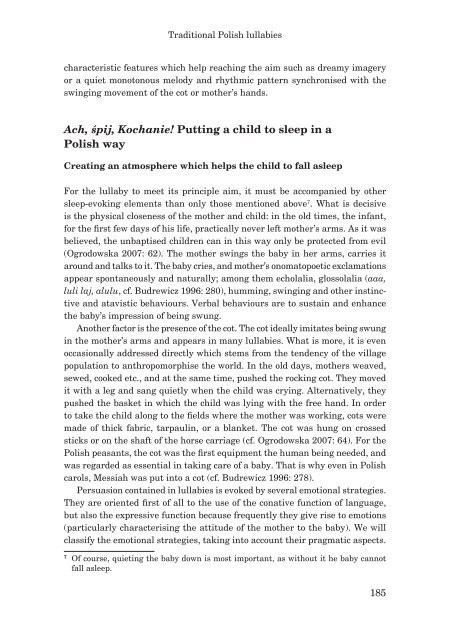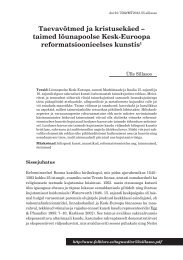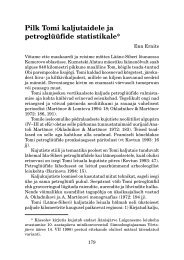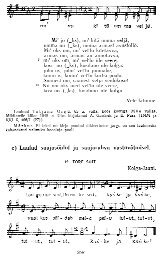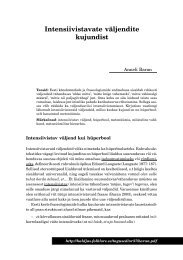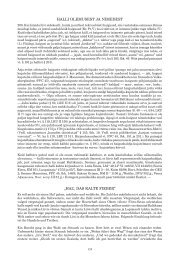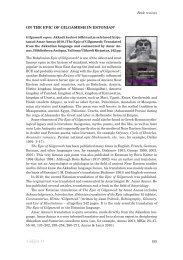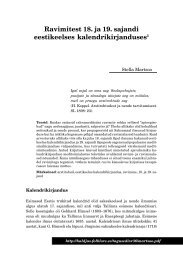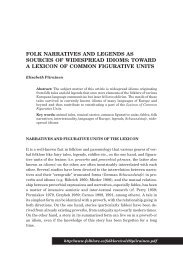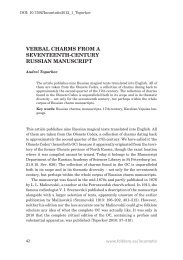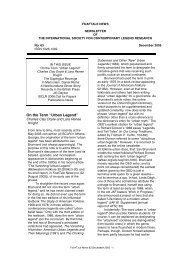You also want an ePaper? Increase the reach of your titles
YUMPU automatically turns print PDFs into web optimized ePapers that Google loves.
<strong>Traditional</strong> <strong>Polish</strong> <strong>lullabies</strong><br />
characteristic features which help reaching the aim such as dreamy imagery<br />
or a quiet monotonous melody and rhythmic pattern synchronised with the<br />
swinging movement of the cot or mother’s hands.<br />
Ach, śpij, Kochanie! Putting a child to sleep in a<br />
<strong>Polish</strong> way<br />
Creating an atmosphere which helps the child to fall asleep<br />
For the lullaby to meet its principle aim, it must be accompanied by other<br />
sleep-evoking elements than only those mentioned above 7 . What is decisive<br />
is the physical closeness of the mother and child: in the old times, the infant,<br />
for the first few days of his life, practically never left mother’s arms. As it was<br />
believed, the unbaptised children can in this way only be protected from evil<br />
(Ogrodowska 2007: 62). The mother swings the baby in her arms, carries it<br />
around and talks to it. The baby cries, and mother’s onomatopoetic exclamations<br />
appear spontaneously and naturally; among them echolalia, glossolalia (aaa,<br />
luli laj, alulu, cf. Budrewicz 1996: 280), humming, swinging and other instinctive<br />
and atavistic behaviours. Verbal behaviours are to sustain and enhance<br />
the baby’s impression of being swung.<br />
Another factor is the presence of the cot. The cot ideally imitates being swung<br />
in the mother’s arms and appears in many <strong>lullabies</strong>. What is more, it is even<br />
occasionally addressed directly which stems from the tendency of the village<br />
population to anthropomorphise the world. In the old days, mothers weaved,<br />
sewed, cooked etc., and at the same time, pushed the rocking cot. They moved<br />
it with a leg and sang quietly when the child was crying. Alternatively, they<br />
pushed the basket in which the child was lying with the free hand. In order<br />
to take the child along to the fields where the mother was working, cots were<br />
made of thick fabric, tarpaulin, or a blanket. The cot was hung on crossed<br />
sticks or on the shaft of the horse carriage (cf. Ogrodowska 2007: 64). For the<br />
<strong>Polish</strong> peasants, the cot was the first equipment the human being needed, and<br />
was regarded as essential in taking care of a baby. That is why even in <strong>Polish</strong><br />
carols, Messiah was put into a cot (cf. Budrewicz 1996: 278).<br />
Persuasion contained in <strong>lullabies</strong> is evoked by several emotional strategies.<br />
They are oriented first of all to the use of the conative function of language,<br />
but also the expressive function because frequently they give rise to emotions<br />
(particularly characterising the attitude of the mother to the baby). We will<br />
classify the emotional strategies, taking into account their pragmatic aspects.<br />
7<br />
Of course, quieting the baby down is most important, as without it he baby cannot<br />
fall asleep.<br />
185


